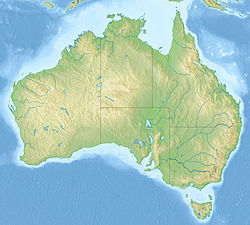| Port of Newcastle | |
|---|---|
 A bulk carrier entering Port Hunter, Newcastle | |
 | |
Location in Australia | |
| Location | |
| Country | Australia |
| Location | Newcastle, New South Wales |
| Coordinates | 32°55′S151°48′E / 32.917°S 151.800°E |
| UN/LOCODE | AUNTL [1] |
| Details | |
| Operated by | Port of Newcastle Operations Ltd [2] |
| No. of berths | 20 [2] |
| Draft depth | 16.2 m. [2] |
| Statistics | |
| Website www | |
The Port of Newcastle is a major seaport in the city of Newcastle, New South Wales, Australia. It is the world's largest coal port. [3]
Contents
It is made up of facilities located at Port Hunter - Yohaaba [4] in the Hunter River estuary. The port was the first commercial export port in Australia and is the world's busiest coal export port. Annual exports of coal from Newcastle exceeded A$15 billion in 2012–13. Newcastle berthed more than 2,200 ships a year in 2012–13. [5]
The port's harbourmaster is the Port Authority of New South Wales. Cargo facilities are operated by Port Waratah Coal Services and Newcastle Coal Infrastructure Group at Kooragang Island, as well as other operators at Mayfield, Carrington and Walsh Point. There are plans to build a cruise terminal.
In April 2014 Premier Mike Baird and Treasurer Andrew Constance announced that "a consortium which comprises Hastings Funds Management and Chinese state-owned China Merchants" had successfully bid $1.75 billion for a 98-year lease of the Port of Newcastle.





